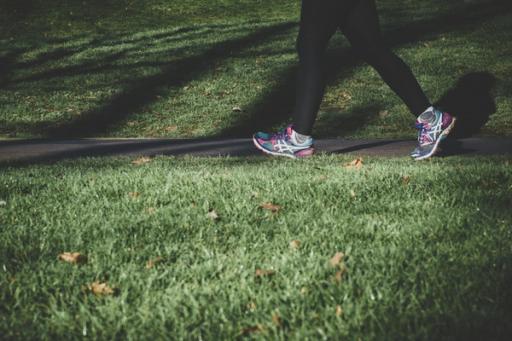
Walking is one of the simplest ways to burn calories, so it’s no surprise that it’s a popular go-to exercise for weight loss. But have you ever wondered how many calories walking 10K steps burns? Walking, or any other exercise, helps you lose weight by creating a calorie deficit. This means burning more calories than you consume. The more you know about how different activities contribute to your weight loss goals, the better. Understanding how many calories walking 10K steps burns and learning the best strategies to maximize fat loss and fitness results effortlessly. So, how calories are measured?
Cal AI’s calorie tracker can help you achieve your weight loss goals. This simple tool provides precise calorie measurements for your unique profile to help you personalize your approach to weight loss. With this data, you can understand how many calories walking 10K steps burns and how to create a walking plan that optimizes fat loss results.

Each person likely burns a different number of calories every time they take those steps because the number of calories you burn through physical activity is affected by a few factors. Still, as current research shows, your weight is not considered to impact your caloric expenditure over 10,000 steps too much. Walking 10,000 steps (about 4.5-5 miles) generally burns around 400-500 calories. You can calculate a more precise number for your caloric expenditure by taking 10,000 steps and adding them to a formula that considers your walking speed, intensity, weight, and the time it took you to walk 10,000 steps.
Total calorie expenditure (also known as Total Daily Energy Expenditure, or TDEE) is the key factor for caloric burn, so I advise you to adopt what works for your life. For many, breaking 10,000 steps into chunks during the day may be more accessible.
Plus, walking faster may be easier if you break it into chunks. You’ll have more energy on each walk rather than feeling exhausted by the end of one longer walk. By increasing your pace, you will then increase your total calorie expenditure.
It’s also worth noting that splitting your 10,000 steps into several walks can help regulate blood sugar levels, improve glucose metabolism, and aid with weight loss if you take some of these walks immediately after eating.
Although the formula above can provide a ballpark figure, Joanna affirms that all factors below (not just those in the formula) will impact your exact caloric expenditure over 10,000 steps.
People believe that the heavier you are, the more energy you expend, but current research suggests this does not have as much of a significant impact. A weighted vest can increase your caloric expenditure, but beware, your technique is good, so you don't contribute to any injuries and scupper your progress. Always invest in your technique for long-term success.
Greatly advocate using varied walking paces for physiological health and fitness. Slower walks, for example, have been proven by science to help reduce anxious thoughts and help you feel more present. Physically, good data suggests the most protective walking speed (i.e., the pace you need to reduce the risk of disease and increase life expectancy) is above 3mph or 4.8kmph. This corresponds to more than three times the energy spent at rest. So, if you can get above this exercise intensity with your walk, the benefits are profound – including the number of calories you burn.
If your environment or walking route is uphill, you can gain the same benefits by walking slower, at just 2mph/3.2 kmph. No hills? You can walk on a treadmill at this speed with a 3.5% incline, and it works just as well for increasing caloric expenditure.
Your walking technique will significantly impact your caloric expenditure. In our study with the South Bank Sports Performance Laboratory, participants worked up to a walking speed of 23% faster over four weeks by employing good technique. This meant they did not just walk faster but further, therefore increasing the number of calories they expended. Incorrect muscle recruitment, such as over-dependence on your hip flexors or negating the recruitment of larger muscle groups, such as the glutes, can potentially reduce your overall caloric expenditure as it can limit the range of motion in your hip extensors and, consequently, the recruitment of your whole torso and abdominal area.

Weight loss depends on creating a calorie deficit. Walking 10,000 steps can contribute significantly, especially with a healthy diet. Consistency matters, and additional lifestyle factors, like diet and metabolism, play a role. Results vary from person to person, and walking alone may not be enough for significant weight loss without dietary adjustments.
Losing 1 pound through exercise means burning about 3,500 calories above the number of calories you have consumed. Losing weight through exercise alone is possible, but it takes a lot of effort and can take a long time. If losing weight is your goal, combine burning calories with exercise and cutting a reasonable amount of calories from your daily consumption (preferably by eating nutritious, lower-calorie foods at recommended portions). This helps maximize results and offers the added benefits of physical activity.
A 2018 study found that a calorie-restricted diet of 1,200 to 1,800 kilocalories (kcal) per day (based on initial body weight) combined with an accumulated 10,000 steps per day (including about 3,500 at moderate to vigorous intensity for at least ten continuous minutes) was associated with enhanced 18-month weight loss. Physical activity such as walking is also helpful for maintaining weight once you have met your goals. So far, studies show that 10,000 steps per day isn't a magic number, but it is a good indicator of how much activity a person is achieving in a day. One study of steps per day and weight showed that, on average, people who took more steps per day weighed less.
Walking briskly for 10,000 steps burns about 340 calories for a 170-pound person, which helps contribute to weight balance. If getting 10,000 steps per day is your goal, here is what you need to know about getting those steps in.
How many miles is 10,000 steps? This distance is equal to walking approximately 5 miles. Unless you have an active job, such as a waiter or nurse, logging 10,000 steps with daily activity is difficult. An inactive person takes 3,000 steps or less in their daily activity of moving around the house. Most people achieve 10,000 steps by taking one or more sustained walks or runs, the equivalent of 30 to 60 minutes of walking. Most health authorities recommend exercising at least 10,000 steps daily to reduce health risks.
If you'd like to take more daily steps for health and fitness, start by determining your baseline. Track your steps for a week or so using an activity tracker or smartphone app (many phones have a built-in step counter). You don't have to jump from 3,000 steps daily to 10,000 overnight. Once you understand your daily average, aim to add 2,000 to 2,500 steps a day to begin (about a mile). Walking a mile burns about 80 calories for a 150-pound person. As you get comfortable with this additional exercise, lengthen your walks or take more short ones to get closer to 10,000 daily steps. In adding steps, consider wearing ankle-support shoes.
Walking 10,000 steps daily, with 3,000 of those steps at a brisk walking to jogging pace, should help you burn enough calories to lose weight. If you are already logging 10,000 steps a day and not losing or maintaining your weight, the key is adding another 2,000 more steps per day while eating the same amount or less. The challenge is that logging more steps becomes time-consuming. Instead, increase your exercise intensity to burn more calories in the same period.
You can boost intensity by walking briskly or running steps or adding intervals such as hills or stairs. Also, set aside time for dedicated moderate-to-vigorous-intensity exercise, whether walking, resistance training, or some other exercise you enjoy. Many fitness trackers and smartwatches detect whether or not your movement is enough to be considered moderate or vigorous exercise.
For weight loss, eliminate empty calories and get good nutrition from everything you eat. A food and exercise diary can help you spot where to make improvements. Some online programs or phone apps let you track all your data in one place (fitness, nutrition, sleep, water intake, and so on).

Improving your technique can help you recruit larger muscle groups in your posterior chain (the back of your body), like your hamstrings and glutes. These muscles allow you to walk with:
If you also work on your hip flexor mobility, you can increase your stride (the distance between the spot where one foot hits the ground and the next time that same foot hits the ground again). This should be over 75cm. The average is 60cm, so you’ll cover more distance per step.
Increase your cadence, how many steps you take per minute. Always do this last. If you attempt to do this first, you’ll likely fall into poor technique and overuse your hip flexors, contributing to lower back and knee pain.
Adding a weighted vest increases resistance and caloric expenditure over 10,000 steps.
Cal AI transforms calorie tracking with our cutting-edge AI technology. Just snap a photo of your meal, and we'll do the rest. Our app combines your phone's depth sensor with advanced AI models to:
It instantly calculates:
With 90% accuracy on visible foods and multiple tracking options like:
We’ve made nutrition tracking effortless. Gone are the days of tedious manual logging calorie-tracking apps. Whether scanning a full meal or a quick snack, Cal AI gives you accurate nutritional information in under 15 seconds. Plus, our AI learns from your feedback, continuously improving its accuracy.
Stay on track with personalized insights and brilliant reminders. Cal AI makes achieving your fitness goals simpler than ever. Today, with Cal AI's AI calorie tracker, track your calories with your camera.